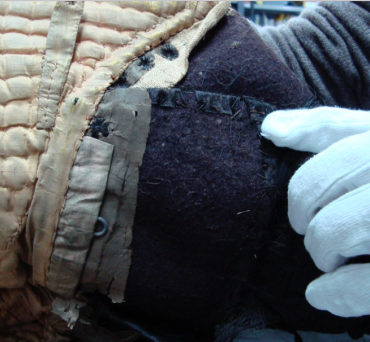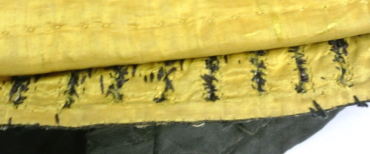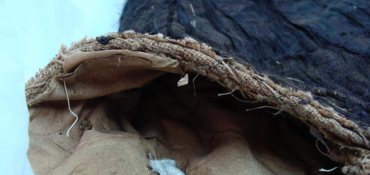We get asked for doublets at the 1642 Tailor more than any other garment, so I thought I’d write a short piece explaining what exactly went into a doublet in the Early Modern period and why we might just charge more than you would expect.

As you can see from the above fellow (we only know he was a gentleman, not his name) who appeared briefly for sale by an art collector the doublet is a tailored garment, close fitting and generally has lots of buttons. What you can’t see is the internal workings, the padding, the stiffening, the little tricks they used to stuff themselves into their doublets and the girdlestead that holds his breeches up. It’s not a simple thing like a coat which at the most would have two layers and some shoulder padding, at the least only one layer. It’s not a lightweight jacket. I’ve picked up original doublets in museums. They have a weight and a presence that is difficult to reproduce in a hurry. You can’t just run one up on a sewing machine.
For a start I would guess that his tabs at the bottom are three layers like a doublet I saw at the Museum of London. The outer silk, the inner lining (possibly silk, or maybe fine linen) and an inner layer of a thickish wool. In the picture below you can see the outer layer wrapped around the wool and at the top of the tab a little bit of the silk lining remaining on the left hand side. This can’t be done on a machine, it has to be whipped on by hand. Spot also the girdlestead (this gets sewn to the doublet together with the tabs for strength) and the little linen tab that takes a cord to go across the belly to the corresponding tab on the right hand side. It takes the strain off of the buttons at the lower end for the more generously proportioned gentleman.

The girdlestead is a hangover from the medieval doublet and hose when the two were tied together with laces and points. By the 1640s the it was a doubled strip of coarse linen with metal eyes fixed to it to take the hooks on the breeches waistband.
To make up the doublet, you begin with the canvas interlining, stretching and shaping to fit the customer and pad stitching in the wool padding across the shoulders. This forms the skeleton of the doublet, a structure that will be entirely hidden when the doublet is made, but vital to the fit of the garment. This is nicely detailed and properly explained in The Modern Maker Vol 1 by Mathew Gnagy, a recommended text for anyone who wants to make their own doublet. The canvas interlining also carries the belly pieces (and the girdlestead) that work as a male corset, flattening the outline slightly. By 1640 these were relatively small, but very rigid, stiffened with whalebone. The picture below shows clearly the outline of the belly piece and another clear view of a belly tab, fixed through the lining to the stiffening and interlining.

Because the interlining is coarse canvas, the buttonholes can’t be cut through this, so a buttonstand is constructed with a flap for the buttons separate to the lining. See below how the stand overlaps the buttonholes so that when the doublet is buttoned the two stiffened halves meet under the buttons. Note also the neatness (or otherwise) of the inside of the buttonholes in this quite high status example.

The buttons are (in all examples I’ve examined in museums) thread wrapped. This may not necessarily have been the case in the 1640s, metal buttons do turn up in archaeological finds, but we try where possible to use reproduction threaded ones, like these silk ones on a recent doublet we made for a client. They’re not cheap, but they are correct. You also need loads, 20 was the lower end of the average number of buttons on a ‘posh’ doublet.

The collar needs to stand up proud. This is stiffened with a collar piece of layers of coarse linen, pad stitched to hold them stiff and curved. This photo shows clearly the layers used to make the collar on this poor degraded doublet.

The collar is also too thick for buttonholes, so the trick is to make finger-loop braid and use this to make loops for the buttons. The braid is secured on the inside and loops pulled through holes in the top layer. You make the holes with a bodkin.

I’ve not even touched the sleeves. They weren’t as stiffened and built as the body, but they were often made in three layers and curved so that the arms were held in a particular way. Often the cuffs were secured with four or five matching buttons and buttonholes. The sleeve linings are also set separately, the lining of the body secured to the armhole before the sleeve lining is whipped in otherwise the whole thing won’t hang nicely when it’s worn.
So, think about what you want before you order a doublet. It’s not just a funny-shaped coat-ey thing, it is a significant garment, an investment in the clothing of the period. It will take you over when you put it on. It will hold your stomach in, your head erect and your arms in a particular curve. You will know you are wearing it and it will take you back to the seventeenth century. And don’t be surprised that we don’t have a standard price. Every single doublet we make is a labour of love and completely different to every other one we’ve made.
